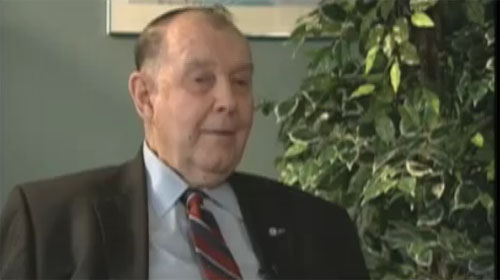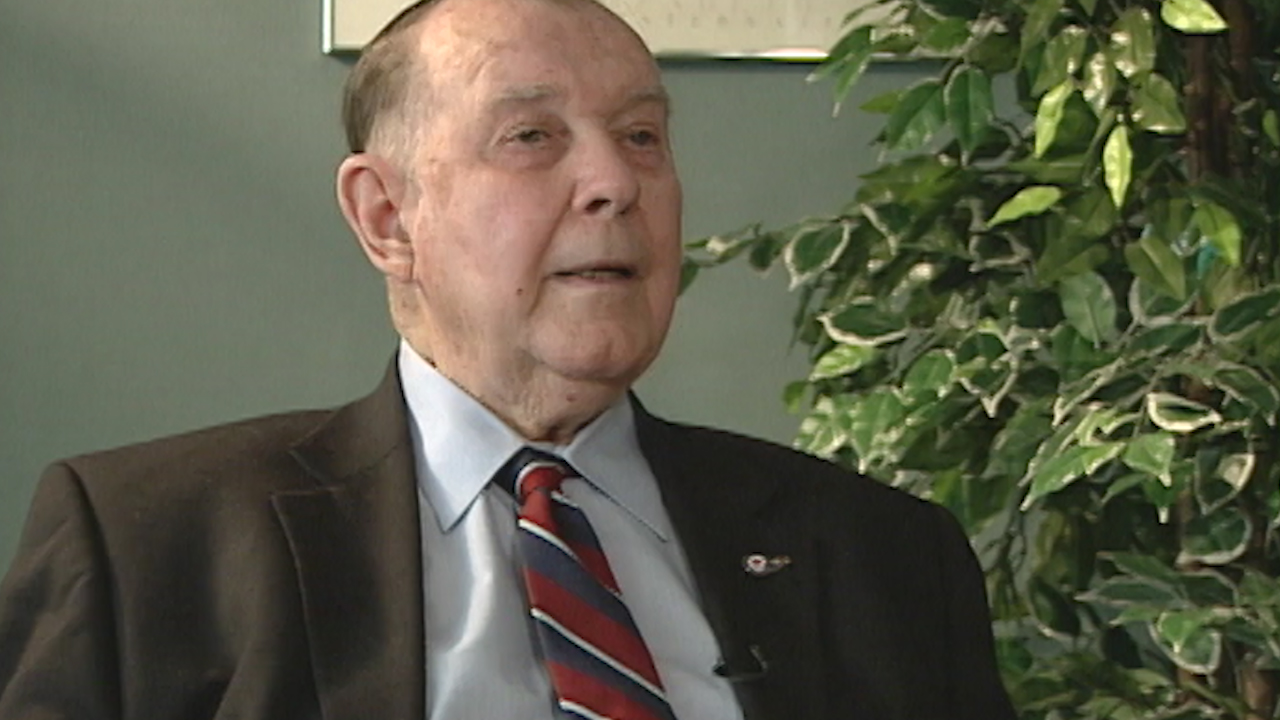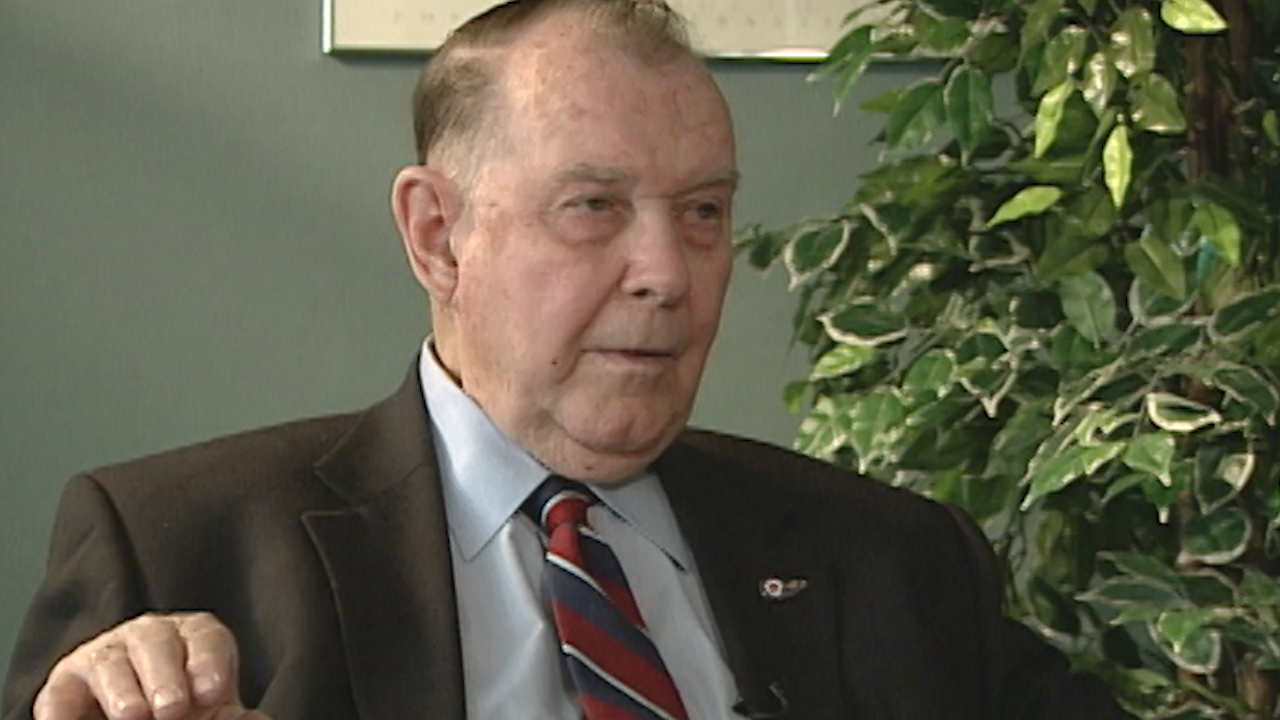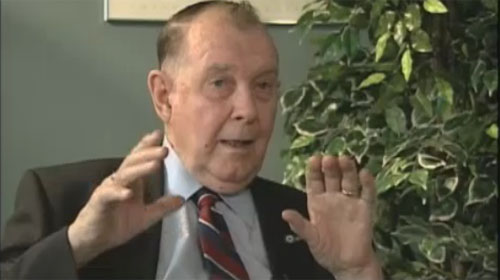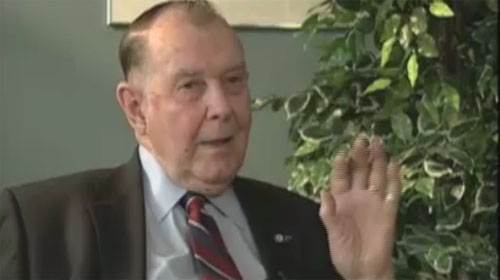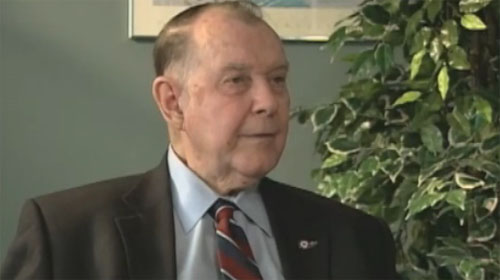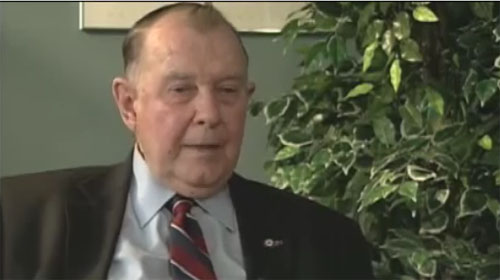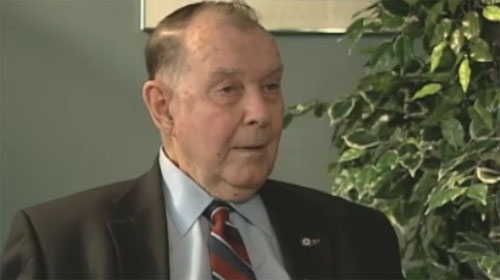Yales, Harvards and Ansons
Heroes Remember
Yales, Harvards and Ansons
Transcript
We started on Yales which was like the younger brother of the
Harvard. I had had a 450 horse power and didn’t have the
retractable under carriage. And here again you did night flying,
you did aerobatics, and it was handling the faster aircraft. And
you did some formation training and so on. It was to the point
where you were competitive ... I mean ... not competitive ...
competent. We were a little bit competitive too because you’d
have simulated dogfights, tail chases whatever. And I guess you
did some low flying; authorized and unauthorized. We did have a
low flying area there. And this evolved through it.
The Harvard, they said if you could fly the Harvard you could
fly anything. It basically followed through ... most people that
went through Harvard units training ended up as fighter pilots.
Later on, depending on ... they did have some stations.
Hagersville had both Harvards and Ansons which was a twin engine
training plane. They went in different streams and some were
better on the Ansons than they were on the Harvards. The Harvard
was fully aerobatic; 600 horsepower. But then as you built up
your time and particularly going back as an instructor, there’s
a period, I think around 400 hours that you think you’re pretty
good and then something happens and you do the right things and
you survive it. Another spot is between 800 and 1000 hours. Now
you really are good because you’ve been around and this builds
up fairly quickly. And I would say when you’re instructing,
you’re flying.
When I started instructing my first course – second course – I
had eight students flying an hour a day. I’m flying eight hours
a day putting in eight hours and then I’m doing some night
flying. So your time builds up pretty quickly and between that
800 and 1000 another something happens. After that you become
... pretty ... not careful... so much as competent. And you do
the things you were suppose to do but at the same time because
you have a bit of free time you do some things particularly and
this is something I’d talk about.
You would never do it now but back then we didn’t have radios.
And we called it instructor’s weather, when the ceiling got down
to 500 feet or as low as 300 feet that was instructor’s weather.
Two instructors, one would be in the backseat of the Harvard,
under a hood, on instrument ... would do an instrument take off
... climb up into the cloud and disappear at 300 feet, 500 feet,
climb up above, meet other instructors up there, have a lot of
fun. Up above the clouds there’s always blue skies no matter
what it’s like down below. And then when it was time to come
back, your instructor goes under the hood again and lets down
very carefully. Fifty feet a minute ... you’d come over the
trees and find your way back to base and you automatically
picked up points to reference where you were. And one of them
was the Grand River that came down from Brantford all the way
down that way. And the...it was the river, all you had to do in
bad weather... was follow the river. Okay that’s what you follow
down, you come to the bridge that’s done, over the bridge and a
curve to the right and then back to the left out into Lake Erie.
Well the curve, you just kept up the curve and that brought you
right in on the runway. And that would be in a snowstorm or
whatever. And so it...all this type of thing ... later on
overseas you could go fall back on all these little tricks that
you had learned and you recognised and you had landmarks and so
on.
I don’t know why, there were people that were killed. We lost 47
at Dunnville but I’ve seen 25 planes in the circuit in a
blinding snowstorm and all you could go was straight down. And
each one would get down in that bad weather because it was close
to Lake Erie.
Description
Mr. Fox discusses Yales, Harvards and honing ones piloting skills.
Charley Fox
Mr. Fox was born in Guelph, Ontario in 1920. He signed up in March, 1940, and was called up the following October. Mr. Fox excelled during pilot training, but a bout of scarlet fever prevented him from accompanying his squadron overseas. Once returned to health, he became a flight instructor, during which time he married. A short time later, he was sent overseas and joined the 412 Spitfire Squadron. He was involved in air support for D-Day and flew many follow-up missions destroying “targets of opportunity” in France and Holland. After the war, Mr. Fox returned home and became a retailer. He now resides in London, Ontario.
Meta Data
- Medium:
- Video
- Owner:
- Veterans Affairs Canada
- Duration:
- 4:43
- Person Interviewed:
- Charley Fox
- War, Conflict or Mission:
- Second World War
- Location/Theatre:
- Canada
- Branch:
- Air Force
- Units/Ship:
- 412 Spitfire Squadron
- Rank:
- Aircraftman 2nd Class / Flight Lieutenant
- Occupation:
- Pilot
Related Videos
- Date modified:



